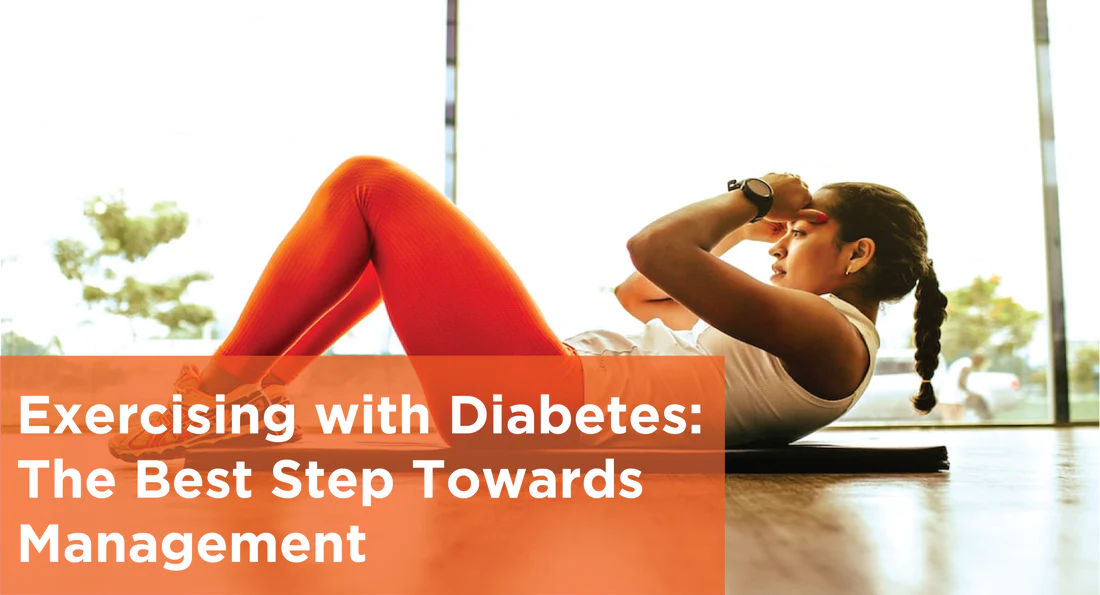Why is it important for diabetics to exercise?
The first and probably the most important lifestyle measure that is suggested by healthcare providers for managing or avoiding diabetes is exercising. There is little to question about the beneficial impact physical activity has on controlling blood glucose levels. Many studies have indeed highlighted the role of certain workouts and physical activities for diabetes :
- HbA1c levels were reduced by 0.7% through exercise in diabetics from different ethnic groups, following different medications and diets. Moreover, this improvement occurred even though they did not lose any weight.
- Diabetic people who walked for at least 2 hours per week were found to be less likely to fall prey to heart disease than those who didn’t and followed a more sedentary lifestyle. Moreover, women with diabetes who spent at least four hours a week doing moderate or vigorous exercise had a 40% lower risk of developing heart disease than those who didn’t.
- Both resistance training and aerobic exercises helped in increasing insulin sensitivity in older and previously sedentary diabetics. A combination of both exercises proved to have better results than any one done alone. When we exercise, our insulin sensitivity is increased. Moreover, the muscles that contract during exercise are able to absorb glucose and use it for energy, even without insulin available.
What happens to blood sugar when you exercise?
- When we indulge in any physical activity, our body extracts energy from blood glucose or muscle glycogen. Glycogen is a form of glucose that the body stores in muscles and the liver when it doesn’t need glucose for fuel. Prolonged periods of exercise reduce sugar levels in our blood.
- Exercising prompts our cells to take up more glucose to meet energy demands, and it also allows more glucose to be transferred from the blood to the cells.
- Exercising can lead to lower blood sugar levels for up to 24 hours, which is why it is one of the best strategies for controlling blood sugar levels.
- For the first 15 minutes of a workout, our body depends on glucose and glycogen (which is converted into glucose) for fuel. After 30 minutes, our body relies more on body fat for fuel.
- After four to six hours of exercising, our glycogen storage is rebuilt.
Tips for exercising with diabetes
Credit: Abbott
- If you’re on medications or insulin that lower blood sugar levels, check with your doctor before starting a workout routine.
This is because exercise can further lower your sugar level, which can cause hypoglycemia. You will either need a snack or some medication before working out to keep the sugar level in check.
- According to the American Diabetes Association, it is ideal to check your blood sugar before working out, during the workout, and after the workout. If pre-exercise glucose levels are less than 100 mg/dL, your blood sugar is too low, while if it is higher than 250 mg/dL, it is too high to exercise safely.
- It is not necessary to perform only high-intensity and difficult workouts to maintain blood sugar levels and lose weight. Instead of HIIT, or other intense workouts, it is better to start slowly and be active moderately for a longer time. These activities can include:
- Walking
- Swimming
- Dancing
- Yoga
- Cycling
- Try to include both resistance training and aerobic exercises in your workout routine, gradually. The combination of both helps control blood sugar better than any of them alone.
- Workout at least thrice a week and don’t compromise with your diet. Working out can lower blood sugar levels and drain energy. Eat properly and in accordance with your diet plan, to maintain strength and endurance while losing weight.
Lo! Foods provide meals and a complete range of food options that are sugar-smart and super delicious. It's one of the best one-stop-for-all-needs for diabetics who do not want to compromise with taste all the while following their diet precisely.
The bottom line
The best way to manage and control diabetes through changes in lifestyle is by exercising regularly and losing weight. Exercising not only helps with blood sugar, but it also offers other benefits such as feeling more active the entire day, better sleep, increased production of the brain's feel good endorphins and reducing the risk of several other diseases.
Exercising with diabetes does not mean high intensity workouts or strength training to lose weight. Less straining exercises like walking, dancing or swimming for longer periods are also very effective in lowering blood sugar levels and losing weight. Having diabetes meals between workouts and throughout the day is also necessary for maintaining strength and blood sugar levels.
References:
https://www.health.harvard.edu/staying-healthy/the-importance-of-exercise-when-you-have-diabetes
https://www.webmd.com/diabetes/ss/slideshow-exercises-diabetes
https://www.webmd.com/diabetes/exercise-guidelines
This Blog post is an initiative by DiabeSmart, to provide accurate and Nutritionist / Doctor approved information related to Diabetes. DiabeSmart is India's first Food brand designed specifically for Diabetics, that has been clinically tested on Diabetics and Pre-Diabetics to deliver 55% - 70% lower Sugar spikes. DiabeSmart is part of Lo! Foods - India's leading brand for Everyday Functional Health foods.













